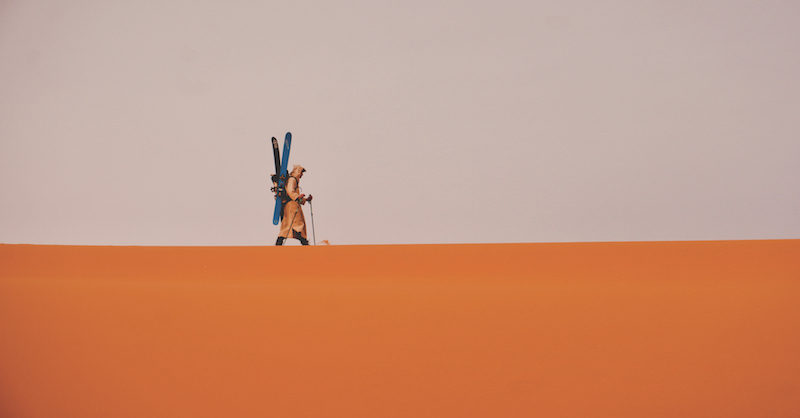Making First Tracks in Morocco
When Vermont’s Aaron Gould-Kavet set out to ski new routes in the Atlas Mountains, he discovered so much more.
STORY AND PHOTOS BY AARON GOULD-KAVET
At 5 a.m. on a January morning, Ahmed and I embarked on our first adventure. Our destination was North Africa’s fourth highest mountain, Jbel M’Goun, a long massif with numerous peaks above 4,000 meters in Morocco’s Atlas Mountains. According to Ahmed, “M’Goun” in Tamazight, a native North African language used by the Berber, means “someone sitting and enjoying the view.” Although I never verified this claim, I’d like to think that a hiker sat atop M’Goun’s mighty summit thousands of years ago, only to name the mountain after what he himself was doing there.
Up until January, snow had been elusive in the Atlas, and I was beginning to wonder if
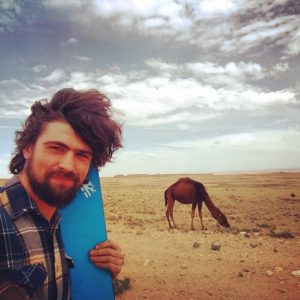
it ever actually snows in Morocco. But just as we walked out the door, big white flakes
began to drift down from above, gently coating the fine leaves of Ahmed’s olive trees. We were in Oulad Ali Youssef, a rural town of 6,000 in the Fes-Meknes region.
I could feel those butterflies you get in your stomach right before the first run of the season, but these were different this time. I would be making my first tracks on a new continent, reaching the culmination of years of work and the realization of a dream.
The Atlas Mountains are vast. Stretching from the shores of the Atlantic to the Mediterranean, these mountains span Morocco, Algeria, and Tunisia, reaching heights of over 12,000 feet along the way. They are home to millions of species of flora and fauna, forests, caves, lakes, and snow-capped peaks, providing views that seem like they are out of science fiction movies set in outer space. The mountains are also home to the indigenous North African population called the Amazigh (Berber).
Before you can even think of laying tracks on these mighty mountains, there are a lot of things you must first endure. Getting to the base of most mountains in Morocco is a headache of massive proportions: There is no public transportation, so you’re best off renting a car and spending hours dodging children riding donkeys, while trying to pass hay trucks going 15 miles per hour—and getting passed by a 1979 Fiat Spider going 110 mph. If you get through that, you still have to forge rivers and drive for hours on winding, muddy tracks.
By the time Ahmed and I arrived in Ait Bougmez, the village at M’Goun’s base, the track was lined with meter-high snowbanks on each side. Through the crisp, moonlit night I could see wisps of clouds rising from the summits 2,300 meters above. The din of murmuring goats mixed with the sound of a nearby stream. After a dinner of tagine, a Moroccan stew, we tucked in at the house of a friend, Rachid. Alarms were set and I was left to lie dreaming of powder, watching the moonlight reflect off the freshly sharpened edges of my skis.
As it turned out, the snow was terrible, Ahmed hurt his knee, and we didn’t reach the summit. But I was hooked.
The Atlas region is the most remarkable place I’ve ever skied. The terrain is from another world, with descents reaching 2,000 vertical meters in the right conditions, with wild terrain features, such as slot canyons with streams which freeze up and become skiable. But the best thing about the Atlas, I discovered, is the Amazigh. “Amazigh” is the Berber word which roughly translates “the free people.” Ahmed Achou, more than anyone I’ve ever met in Morocco, embodies this spirit of freedom.

Life in the Atlas
Ahmed grew up in Oulad Ali Youssef, a small village at the edge of the Middle Atlas Mountains, roughly 200 kilometers southeast from the city of Fes. At the time, Oulad Ali had no electricity, and only a rough 4 x 4 track that led to its muddy walls.
Ahmed’s father passed away when he was only three, which forced his brother to look for work in the city and send home what little money he could. After completing the seventh grade, Ahmed himself left school to provide for his family. He picked olives and herded sheep through the remote steppe which lies above Oulad Ali. In 2005, a flood of truly Biblical proportions destroyed his family’s home, forcing the whole family—nearly a dozen people—to live in just a single tent.
Through it all, Ahmed found sanctuary in the mountains, where the enormous vistas seem to reach out and swallow any earthly problems. Perhaps it is, in fact, this feeling for which the mighty “M’Goun” is named. In any case, it was while cleansing his mind in the mountains that Ahmed began to notice the handful of Spanish climbers who had started to visit the Middle Atlas. Sensing an opportunity, he decided to become a mountain guide. In ten years, Ahmed taught himself Spanish and French, learned how to climb and ski and built a beautiful mountain guesthouse called Gite Bou Naceur.
It was here, while gazing at the mighty cliffs above his gite, or guesthouse, that I met Ahmed. And we both knew immediately that we had a unique kind of friendship. We’re
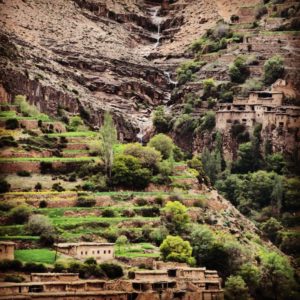
the kind of friends who finish each other’s thoughts, who understand what the other is thinking before the other speaks. It’s the kind of friendship that transcends even the vastest cultural and linguistic barriers.
I had originally come to Morocco to learn Arabic, part of a dream I had while working at Alta Ski Area in Utah. I knew if I actually wanted to ski the goods in the Atlas Mountains, I would need to learn the local language and befriend rural Moroccans. How I was going to do that remained elusive, that is, until I met Ahmed.
Ahmed doesn’t speak any English, but my broken Arabic which I had dutifully learned was enough for us to communicate. After a single meeting, he invited me to come live with him and his family in Oulad Ali Youssef. I finished my studies in Rabat, Morocco’s capital. Six weeks and a big snowstorm later, I returned to Oulad Ali, only to immediately pack the car, and set my alarm for 5 a.m.
First Tracks
Ahmed and I would go on to ski every major peak across the Atlas Mountains, as one of the snowiest seasons in a decade brought powder skiing well into May. Sometimes, for more than a week at a time, we ventured through the mountains, skiing first descents high above the Sahara. I was doing little to document all the amazing places I was skiing, so I began exploring the idea of making a new kind of ski movie in Morocco.
I wanted to make a film that both shows the wonder of skiing and riding in this remarkable place, while also providing a platform for the Amazigh people to share their story and their experience living in these mountains. A longstanding frustration I’ve had with adventure films which take place in developing countries is that they often focus on the story of the athletes, while leaving little room for the voices of the people who actually live in the countries they’re visiting. It’s great that so many people from developed countries have transformative experiences traveling to societies different from their own, but the neocolonial trope of Westerners having life-changing travels in Africa has been repeated ad nauseum across all too many types of media.
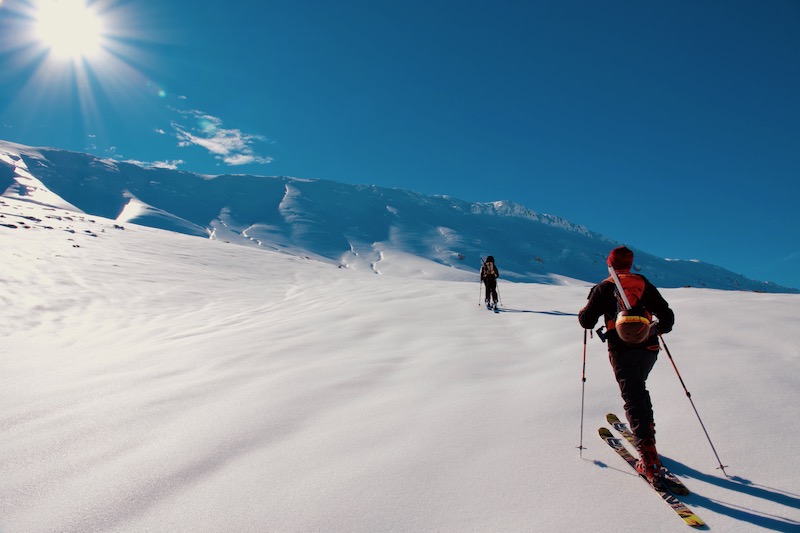
Unfortunately, few people seemed to understand my idea, and I had just about given up on making a Moroccan ski film this season. Yet to my surprise, Charlie Coquillard, otherwise known as “The Vertical Wanderer,” found some of my snowy pictures of the Atlas Mountains on Instagram and reached out to me. Just a few short weeks later, we packed up Charlie’s van, and began shooting a film unlike any either of us had ever seen. Even now, having completed the film, I still sometimes hesitate when someone asks me what it’s about. It is a film about the Amazigh, mountain tourism, and of course skiing, but none of those things are the essence of the movie. If I had to put it simply though, the film is about our relationship with the mountains, about how we live with the mountains, our place in them and their place in us.
While working on the film, I indeed asked many of my Amazigh friends to describe their relationship with the Atlas Mountains. Their responses were nearly uniform: “Aalaqt hub” (علاقة حب) meaning “A relationship of love.” Far from jaded, most of the people who call the Atlas home know that they are the guardians of a very special place. They love these mountains in the way one loves a grandmother, seeing in them a deep wisdom and calm that can scarcely be found anywhere else. These mountains are the place where Ahmed and the Amazigh go to clear their mind, to sing at the top of their lungs, to release themselves from trials of life, and to be at one with nature.
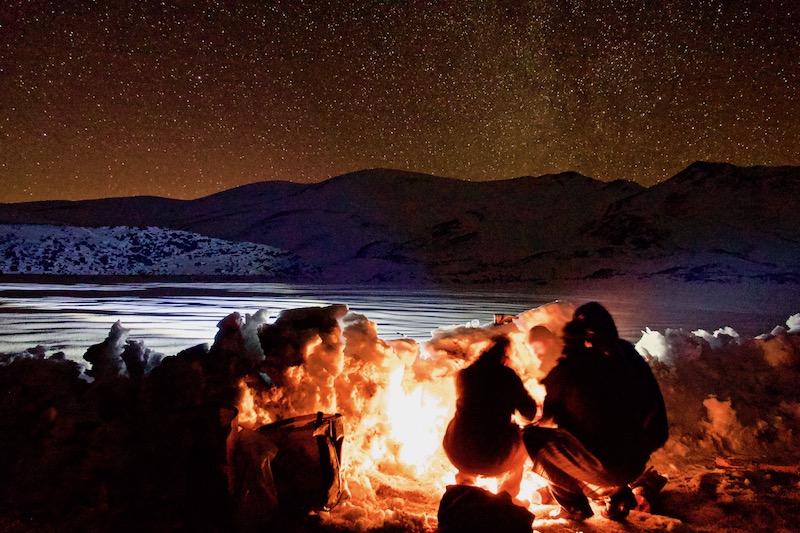
Mountain Tourism and Morocco
The desire to feel removed from civilization is as old as civilization itself. We are seemingly designed to connect with nature, to simply sit and enjoy a majestic view, and to explore the wonder of the natural world around us. However, as cities grow and our societies become increasingly detached from nature, more and more people are traveling to mountainous regions in search of the unique sense of remoteness that they provide.
However, these visitors bring the very trappings of modern life they are trying to escape: money, technology, and trash, to name a few. In turn, mountain communities and environments are being transformed at a rapid pace. In the worst cases, these transformations lead to the destruction of previously pristine alpine areas. Mountain
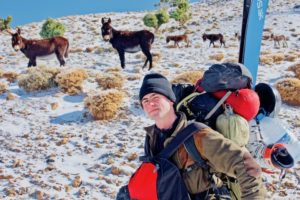
cultures, preserved in their isolation, are also quickly changing as they come in contact with the outside world.
Simultaneously, there is a considerable need for human development in mountain communities, which necessitates significant investments in basic services and infrastructure. Because mountainous regions are by nature remote, inaccessible and sparsely populated, carrying out these expensive investments inevitably requires subsidies from the urban population. Consequently, development is often foregone in these regions and increasingly these isolated mountain communities are left behind.
Balancing the need for human development with that of environmental and cultural protection is perhaps the greatest challenge of our time. At the same time, there is a clear need for economic and human development in these areas, which has recently been exacerbated by the diminishing returns from agriculture and the increasing effects of climate change.
A Threatened Climate
While we were making the film, we experienced the impacts of climate change firsthand. Persistent high pressure left us with the lowest snowpack in 20 years, and when it did snow, we faced howling winds, and the sky became a murky brown from the Sahara dust.
For the people living here, climate change is an everyday reality. While conducting nearly 40 interviews throughout the Atlas region, every person I spoke with said that the climate in their region had changed significantly in their lifetime.

In light of the dramatic changes they described, it’s hardly surprising that there is this level of climate awareness among the Amazigh. Rainfed agriculture has nearly been eliminated, replaced by extensive irrigation. Where the droughts are worst, even irrigation fails to address the lack of mountain runoff which has traditionally watered the farms of the Atlas region. Sandstorms, floods, and erosion are also a threat to many Atlas communities, all of which have increased in frequency and magnitude as the climate warms.
Although mountain tourism poses dangers to both the communities and environment of the Atlas Mountains, there are also ways in which it sustains mountain communities and enables environmental protection. Mountain guides in the Atlas pick up trash, look after forests to protect them from loggers, and deliver much-needed supplies by foot to even the most remote areas. Meanwhile, many farmers in the Atlas are already facing the choice of migrating and supporting their families or trying to survive off of farms which can no longer produce food in the changing climate. For many in the Atlas
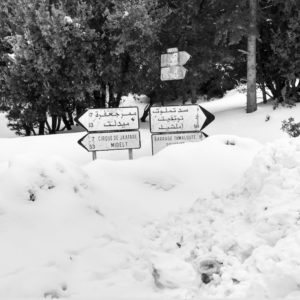
Photo by Aaron Gould-Kavet
Mountains, their livelihoods already depend on mountain tourism, and with this income they support not just their families but also countless members of their communities.
This is where a complicated, if not paradoxical image of mountain tourism emerges, one that this film can only begin to address. Mountain tourism can sustain vulnerable communities, but it can also change them beyond recognition. It can help farmers weather the effects of climate change, yet travel is itself a major driver of greenhouse gas emissions (the global tourism industry accounts for 5.5% of global greenhouse gas emissions). It can incentivize environmental preservation, reducing, for example, overgrazing and logging, but it also brings with it graffiti, trash, human waste and other pollutants. It can sustain traditional artisans, while also changing traditional culture and society.
In living and working with Amazigh communities across the Atlas Mountains for more than a year, the message I heard was often the same: “We are in love with our mountains, and we are happy to share them with you. In exchange, please help us sustain our communities and protect our culture and environment.”
Aaron Gould-Kavet grew up in Williamstown, Vt.
Want to Go?
Ahmed Achou and Aaron Gould-Kavet have created Bou Naceur Sustainability, dedicated to sustainable tourism. You can stay in the dorm rooms at Achou’s guest house, Gite Bou Naceur for $40 a night. A 10-day ski tour (all inclusive except airfare and gear) with four people costs around $1,000 per/person. Guests bring all backcountry gear and avalanche equipment including beacon, shovel and probe. bounaceursustainability.com
Featured Photo Caption: A long way from his home town of Williamstown, Vt., Aaron Gould-Kavet crosses a sand dune in Marzouga, wearing the traditional djalaba and ready to try sand skiing. His film about skiing and the cultures he encountered in the Atlas, “Amazigh” screens Saturday, November 16th, at Rabble-Rouser, 62 Main St., Montpelier, from 6:30-8:00 p.m., followed by a Moroccan dance party until 10 p.m.

